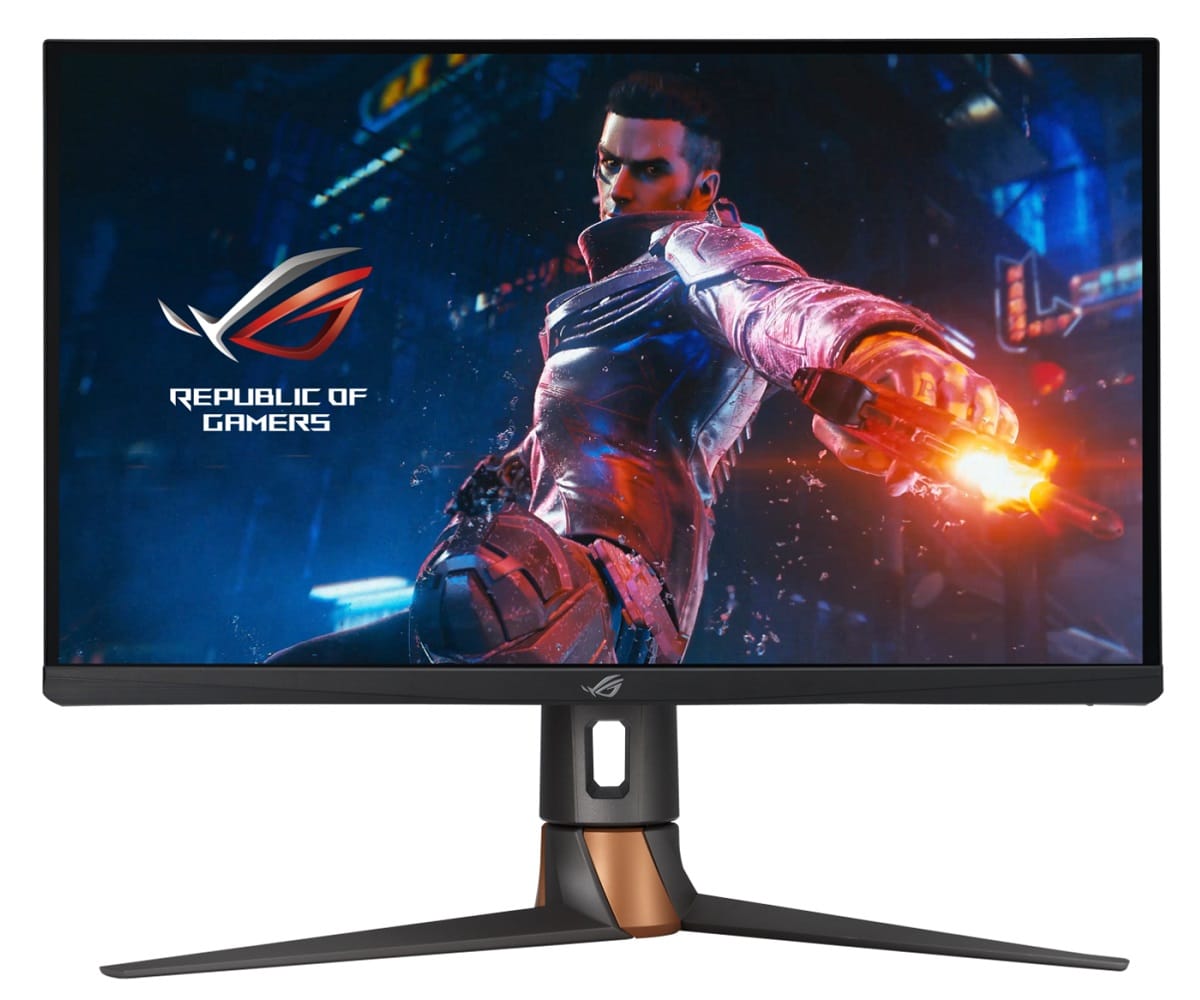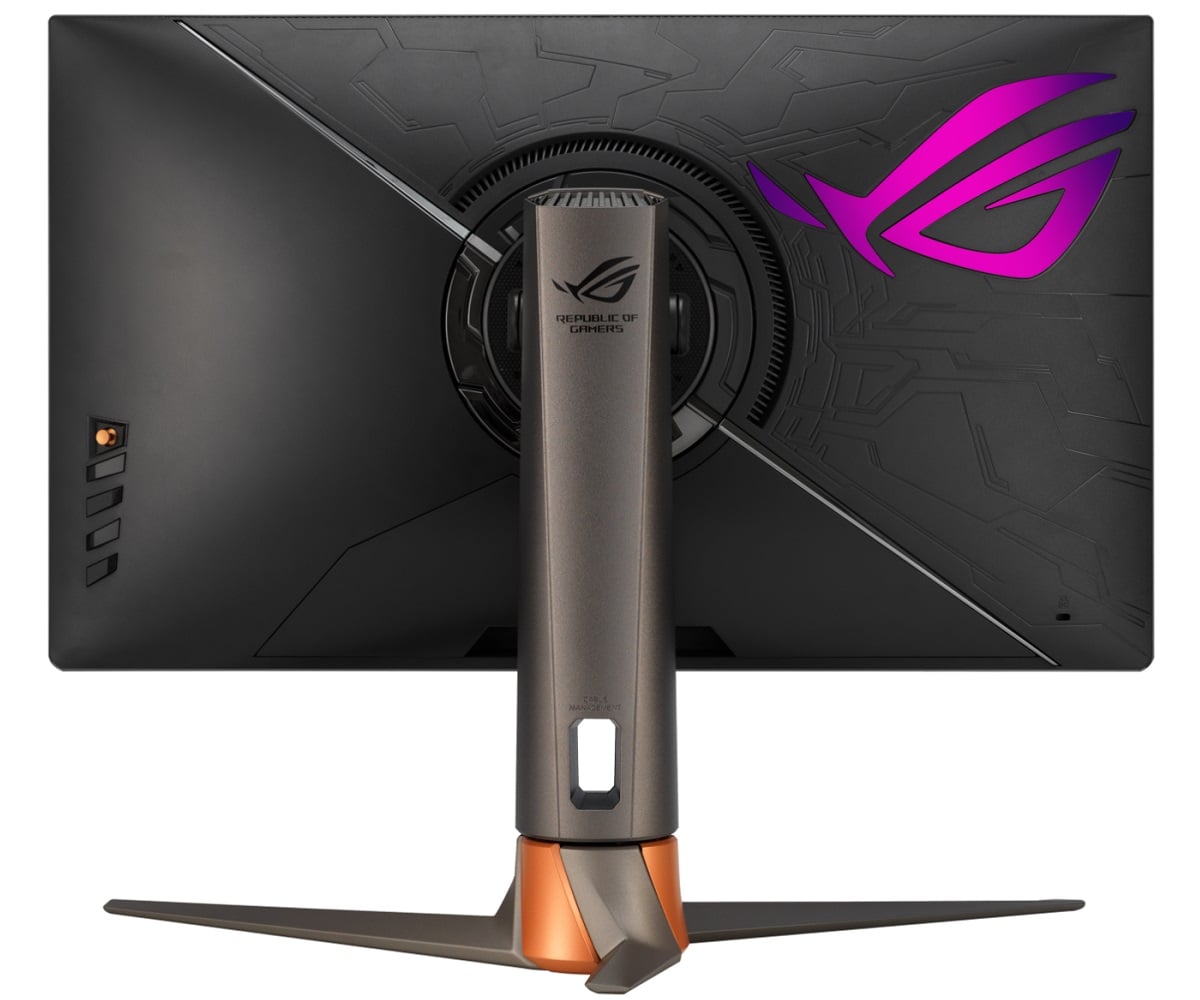ASUS ROG Swift PG27AQN 360Hz WQHD IPS with G-SYNC
As an Amazon Associate and Newegg Affiliate I earn from qualifying purchases made using the “Buy” button at the bottom of this post. Where possible, you'll be redirected to your nearest store. Further information on supporting our work.Competitive gamers will often do whatever they can to maximise frame rate. Having a monitor that can complement this with a high refresh rate is particularly desirable. The ASUS PG27AQN of the ROG Swift series delivers this, driving things up to 360Hz in combination with a WQHD or ‘1440p’ resolution. The monitor offers familiar styling for the series, with plenty of dark matte plastics and a rusty orange coloured ‘plasma copper’ core for a touch of visual interest. The top and side bezels are dual-stage, with panel border flush with the rest of the screen plus thin hard plastic outer part. The OSD (On Screen Display) is controlled by a joystick and buttons running down the rear of the monitor, at the right side as viewed from the front.
A 27″ 2560 x 1440 (WQHD or 1440p) IPS-type panel is employed, with 360Hz and G-SYNC module. More specifically an AUO AHVA (Advanced Hyper-Viewing Angle) panel. This delivers VRR for compatible Nvidia GPUs and via DP Adaptive-Sync for ‘AMD FreeSync’, with effective 1 – 360Hz VRR range. Nvidia’s ‘Reflex Latency Analyzer’ is also supported, assisting in system latency measurements when used with a compatible mouse and Nvidia GPU. A matte anti-glare screen surface is used, whilst a 1000:1 static contrast ratio, 178°/178° viewing angles and 8-bit colour is specified. A flicker-free WLED backlight provides a 400 cd/m² (600 cd/m² HDR peak) typical maximum luminance and 98% DCI-P3 colour gamut. The monitor is factory calibrated with specified DeltaE <2 for the sRGB colour space. It's also VESA DisplayHDR 600 certified, allowing it to respond to HDR10 content in a fairly dynamic way. The colour gamut can be put to good use alongside 10-bit colour processing and decent pulses of brightness, alongside a degree of local dimming for a situational boost in contrast.
A 1ms grey to grey response time is specified (caution advised), with the G-SYNC module including variable overdrive which re-tunes the response time behaviour over a broad range of refresh rates to help balance speed and overshoot levels. ULMB 2 also features as a strobe backlight setting to maximise motion clarity. The stand attaches centrally via a quick release mechanism and can be replaced by a 100 x 100mm VESA compatible solution if preferred. The stand is fully adjustable, including 100mm (3.94 inches) height adjustment and pivot into portrait. A customisable RGB LED (‘Aura Sync’) lighting element is included towards the top right, at the rear. The ports face downwards and include; DC power input (external ‘power brick’), 3 HDMI 2.0 ports, DP 1.4 (with DSC), 2 USB 3.2 Gen 1 ports (one for Nvidia Reflex), USB Type-B upstream and a 3.5mm headphone jack. As a ‘G-SYNC Esports’ monitor, the monitor can simulate a 25″ Full HD (1920 x 1080) or 2368 x 1332 experience with its so-called ‘Esports Dual Mode’ and includes a ‘Esports Vibrance’ preset designed to give a competitive edge.
Further details can be found on the manufacturer’s website. The monitor is listed for ~$1050 USD.



